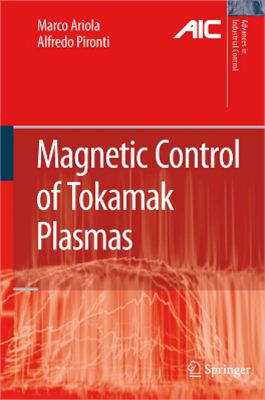Springer-Verlag London, 2008, 161 pages
The problem of confining a plasma, with sufficiently high density and temperature, is of crucial importance if nuclear fusion is to be made usable as a form of power generation. Tokamaks – devices with a toroidal geometry – are among the most popular candidates by which such confinement can be achieved. A tokamak separates a plasma from its surroundings by means of a magnetic field generated by several coils distributed around the plasma.
The main topic of Magnetic Control of Tokamak Plasmas is the design of feedback control systems guaranteeing the stability of plasma equilibrium inside a tokamak and the regulation of the plasma position and shape during plasma pulses. Modelling and control details are presented, allowing the non-expert to understand the control problem. Starting from equations of magneto-hydro-dynamics, all the steps needed for the derivation of plasma state-space models are enumerated. The basics of electromagnetics are frequently recalled. The control problem is then described beginning with control of current and position – vertical and radial – and progressing to the more challenging shape control. The solutions proposed vary from simple PIDs to more sophisticated MIMO controllers.
The problem of confining a plasma, with sufficiently high density and temperature, is of crucial importance if nuclear fusion is to be made usable as a form of power generation. Tokamaks – devices with a toroidal geometry – are among the most popular candidates by which such confinement can be achieved. A tokamak separates a plasma from its surroundings by means of a magnetic field generated by several coils distributed around the plasma.
The main topic of Magnetic Control of Tokamak Plasmas is the design of feedback control systems guaranteeing the stability of plasma equilibrium inside a tokamak and the regulation of the plasma position and shape during plasma pulses. Modelling and control details are presented, allowing the non-expert to understand the control problem. Starting from equations of magneto-hydro-dynamics, all the steps needed for the derivation of plasma state-space models are enumerated. The basics of electromagnetics are frequently recalled. The control problem is then described beginning with control of current and position – vertical and radial – and progressing to the more challenging shape control. The solutions proposed vary from simple PIDs to more sophisticated MIMO controllers.

